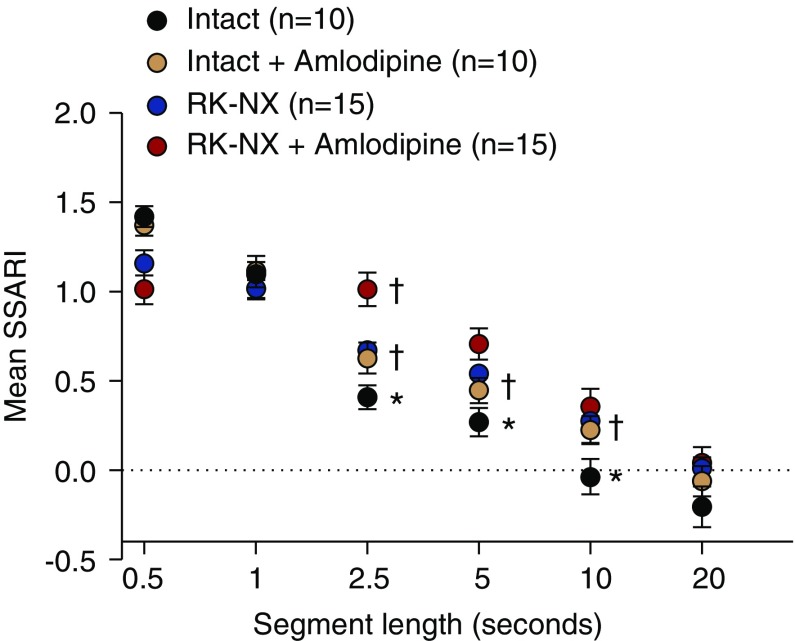Figure 2.
Demonstration of improving autoregulatory compensation with increasing segment length as indicated by the calculated SSARI (mean±SEM) in rats with intact and RK-NX. The effects of the CCB amlodipine on this relationship in both intact control and RK-NX rats are additionally illustrated. With a segment length of 0.5 seconds, the calculated SSARI exceeded or tended to exceed 1.0 (in all groups) indicative of the initial passive vascular responses to BP change before the onset of AR. With 1-second segments, SSARI in all groups averaged approximately 1.0, indicating an absence of autoregulatory response within this time frame. However, with 2.5-, 5-, and 10-second segments, significant differences were observed between intact and RK-NX rats in the extent of autoregulatory compensation achieved (1-SSARI) (*P<0.009 maximum). In both intact and RK-NX groups, progressive declines in SSARI were observed, with longer segment lengths indicating better time-dependent autoregulatory compensation. However, consistent with the slower autoregulatory responses in RK-NX rats, complete compensation (SSARI of approximately 0.0) was observed with a segment length of 10 seconds in intact rats, but such was only seen with 20-second segments in RK-NX rats. The adverse effects of amlodipine on autoregulatory responses in both intact and RK-NX rats are likewise most clearly observable with segment lengths of 2.5 seconds (†P<0.007 maximum versus respective intact and RK-NX rats without amlodipine). As in RK-NX rats, an SSARI of approximately 0.0 was not observed with segment lengths of <20 seconds in rats that had received amlodipine. The adjusted significance level on the basis of the Dunn–Sidak correction for multiple comparisons was P<0.009.

